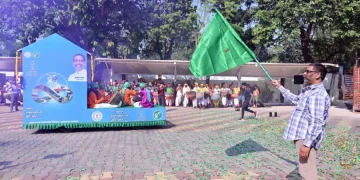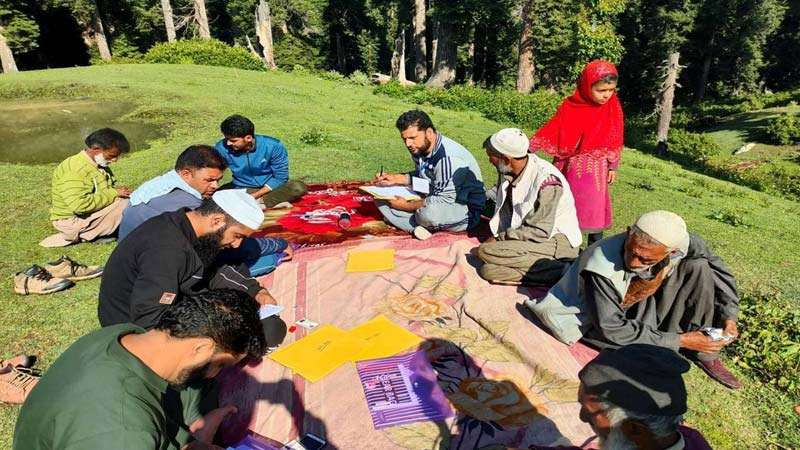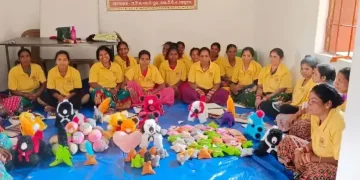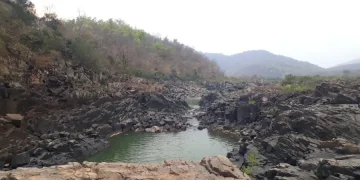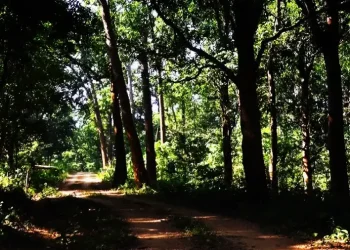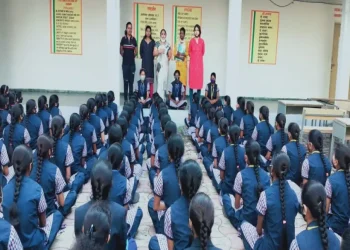Mohit Kandhari (MK): Please describe broadly how you are enrolling the scattered tribal population for welfare schemes?
Shahid Choudhary (SC): The Tribal Affairs Department is aggressively working on this front as it is mandatory for all government departments to ensure the tribal population is covered under beneficiary-oriented schemes and overall developmental initiatives.
A robust database and statistics are the basic platforms on which such planning was envisaged. This was missing till now. So, we started with surveys of the transhumant tribal population and villages, along with several other specialised studies to facilitate sectoral planning.
We have geotagged more than six lakh transhumant tribals and nomads. The process of sharing the database with government departments is on. Likewise, 367 villages with 500-plus tribal population have also been notified for concerted developmental efforts.

Transhumance is the action or practice of moving livestock from one grazing ground to another in a seasonal cycle, typically to lowlands in winter and highlands in summer.
MK: Despite many schemes launched in the past, a majority of the beneficiaries still remain uncovered. What are you doing about it?
SC: The tribal population in villages is understood to be covered under all major flagship schemes and programmes. But there are some challenges since tribal concentration is mainly in remote areas and there too, their population is sparse.
Mainly, the challenge is that the transhumant population undertakes biannual seasonal vertical migration and thereby, misses benefits of various schemes, except education to some extent, and livestock healthcare.
This year, we have funded a separate Tribal Health Plan in coordination with the National Health Mission (NHM), a Tribal Veterinary Healthcare Plan in coordination with the Animal/Sheep Husbandry Department, a Livelihood Programme under which 1,500 ‘mini-sheep farms’ have been rolled out, and several other initiatives.

In fact, all departments are duty bound to ensure equitable development of tribal areas, and schemes like MGNREGS, pension and welfare initiatives all have to focus on the tribal population.
MK: How is geotagging done? What purpose will it serve?
SC: The first survey of transhumance mapped the Dhoks (a grouping of hutments housing Gujjar, Bakerwal and Pahari tribes). A Dhok has many hamlets and scattered families. Teams visited each location and recorded parameters. Highland pastures and more than 75,000 locations were geotagged, indicating latitude and longitude, to plan locational development and help monitor interventions.
First Transhumance Survey in Numbers
 Over 10,000 enumerators and surveyors
Over 10,000 enumerators and surveyors Over 75,000locations geotagged
Over 75,000locations geotagged 6.12 lakh transhumant population ascertained
6.12 lakh transhumant population ascertained 4 types of migration targeted
4 types of migration targeted
MK: Is Jammu & Kashmir the first to do a transhumant survey? Where did the idea originate from?
SC: Yes. Jammu & Kashmir is the only state/UT having such a large transhumant population. The idea was to have a snapshot of transhumance to give an overview of the spread of population. It indicates the enormity of the challenges involved.

MK: How was the entire exercise carried out?
SC: The survey targets four types of migration, namely, intra-district, inter-district, inter-province and inter-state/UT. The survey teams were constituted under the supervision of Deputy Commissioners (Principal District Census Officer).
MK: What was the manpower involved?
SC: The numbers varied from district to district, depending upon the number of Dhoks and their population. More than 10,000 enumerators and surveyors were part of the process. All the development departments were involved.
MK: What are Jammu & Kashmir’s total tribal and transhumant populations?
SC: Jammu & Kashmir has more than 18 lakh tribals. Of this, 6.12 lakh are transhumant, as per the recent survey.
MK: What is the total budget for this project and expenditure so far?
SC: The erstwhile Planning Commission made it mandatory for states to earmark outlay corresponding to tribal population. Around 10% of the UT’s budget is being invested in tribal areas. The Tribal Affairs Department has released around Rs 300 crore this year for various projects and schemes.
MK: What is the Tribal Affairs Department’s total budget for this fiscal?
SC: Our budget for 2021-22 is Rs 378 crore, besides an additional central grant of Rs 154 crore. However, all departments have separate funds for tribals.







